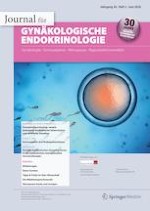26.03.2020 | Originalien
Aneuploidiescreening im Kontext der neueren biologisch-medizinischen Erkenntnisse, der rechtlichen Situation in der D‑A‑CH-Region und unter Berücksichtigung der psychologischen Aspekte der Kinderwunschpatienten
Erschienen in: Gynäkologie in der Praxis | Ausgabe 2/2020
Einloggen, um Zugang zu erhaltenZusammenfassung
Das „preimplantation genetic screening“ (PGS)/„preimplantation genetic testing for aneuploidies“ (PGT-A) ist ein Teil der Präimplantationsdiagnostik (PID). Der Begriff umfasst eine Vielzahl von Methoden, die angewandt werden, um die chromosomale Konstitution eines Embryos vor dessen Transfer in die Gebärmutter zu erfassen. Dabei geht es nicht etwa darum, die Weitergabe (mono‑)genetisch bedingter Erbkrankheiten zu verhindern, sondern rein um den Ausschluss von Aneuploidien. Mit der Anwendung eines PGS sollten die Implantationschancen sowie die Lebendgeburtenraten steigen und die Abortraten sinken, da euploide Embryonen für den Transfer ausgewählt werden, so die klinische Hypothese. In den letzten Jahren erfuhr diese Technik nicht nur eine rasante technische Entwicklung, sondern erfreut sich international auch einer zunehmenden Beliebtheit. Was dabei häufig nicht beachtet wird, ist die Tatsache, dass nach wie vor die klinische Evidenz fehlt, die den postulierten „benefit“ des PGS beweist. Selbst neueste Techniken, wie das „next generation sequencing“ (NGS), konnten bisher daran nichts ändern. Im Gegenteil, diese hochsensitiven Analyseplattformen haben zu neuen Erkenntnissen über den chromosomalen Status des Präimplantationsembryos geführt und damit auch zu einem fundamentalen Problem, das das PGS allgemein infrage stellen könnte – nämlich die Tatsache, dass ein nicht unwesentlicher Teil der menschlichen Embryonen nicht uniform euploid oder aneuploid ist, sondern als ein chromosomales Mosaik (CM) mit numerischen und/oder strukturellen Aberrationen vorliegt. Diese Übersichtsarbeit fasst die aktuelle Literatur zusammen und durchleuchtet die Kernprobleme des PGS aus biologisch-medizinischer, juristischer und ethischer Sicht.
Anzeige
